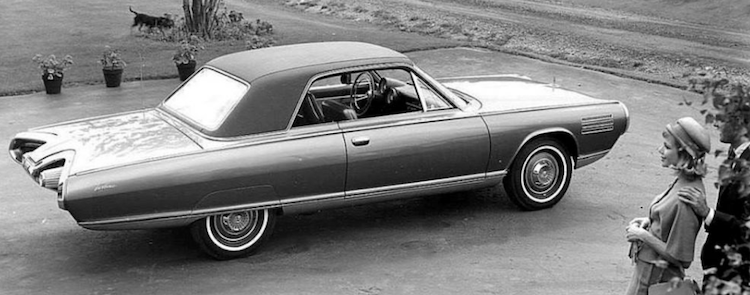An interesting fact is that the '35 Ford and Plymouths designs were largely the work of the same man, as noted in my 1996 edition of the classic book A Century of Automotive Style by Michael Lamm and David Holls. They state:
"The 1935 Ford and the 1935 Chrysler/Desoto Airstreams were Phil Wright creations." (Page 80)
"Briggs again stepped in to help style the 1935 Ford and its 1936 facelift. The 1935 model was done by Phil Wright at Briggs; Holden (Bob) Koto did the 1936 grille, hood and fender changes, also at Briggs." (Page 125)
"Meanwhile, Ralph Roberts at Briggs asked Phil Wright to design what became the 1935 Airstream series." (Page 157)
Technically, 1935 Plymouths were not Airstreams, a model name given to non-Airflow Chryslers and DeSotos. But the body design was essentially the same, as Chrysler Corporation was entering a long period (through the 1952 model year) where all its divisions marketed variations on common body platforms.
The mid-1930s was a time when car designs were in a period of rapid evolution in the direction of integrated elements and stylistic streamlining, a process that can be said to have been completed by the arrival of the 1949 Ford. Body-making technology was moving in the direction of all-steel, and away from metal panels attached to wood framing. One aspect of this was the appearance of roofs without fabric inserts.
Automobile glass-forming technology was only beginning to reach practical availability of curved glass, so most car glass was still in the form of flat panels.
1935 Chevrolet Master DeLuxe - car-for-sale photos
Only Master DeLuxe Chevys got new bodies for 1935; the Chevrolet Standard series carried over the previous body. Note the all-steel top, unlike the old-type tops shown on the Ford and Plymouth below. A good deal of large-radius metal rounding is present because that was the economical production stamping technology state of the art. Those rounded window profiles were a styling feature intended to be in synch with the rounded body features. The result was a heavy, bulbous appearance that was slowly eliminated in future General Motors 1930s redesigns.
1935 Ford DeLuxe Fordor - car-for-sale photos
Fords tended to look "leaner and meaner" than GM cars during the Thirties. The windshield is flat, not V'd. Front-end elements are not integrated compared to the Chevrolet -- especially the horns. Fenders are S-curve (ogive) shape, a fading concept.
1935 Plymouth DeLuxe - Mecum Auctions photos
Also a flat windshield. The general feeling is similar to Ford's. This is not surprising given the Briggs bodies styled by the same designer.
1935 General Motors A-bodies featured B-pillar-hinged "suicide" front doors, corrected to A-pillar hinging for 1936. Fenders are large, clamshell affairs. Note the highly rounded window profiles.
This Ford lacks an attached trunk, though those were available on Fordor Touring Sedans. Window profiles are less rounded than on the Chevrolet.
Plymouth's passenger greenhouse is less rounded than even the Ford's, though that would change on the 1937 redesign. Fenders are similar to the Chevy's, but not so bulky.
The Chevrolet's aft end seems bulky, having prominent rounded surfaces and window framing.
"Slantback" rear has no trunk or any opening to the behind-the-seat storage area. And the spare tire is mounted externally. The raised "character" ribs are bold and extensive. They add some visual interest and help tie the designed together. But they verge on fussiness.
This Plymouth has an integral trunk that carries the spare tire along with some luggage. Aside from the more rectangular windows, this car's design strikes me as being partway between the Ford and the Chevy.


















%20Touring%20Sedan%20%20-%20for%20sale%20-%20left%20side.png)
%20Club%20Sedan%20%20-%20Mecum%20-%20right%20front%2034.png)
%20Club%20Sedan%20%20-%20Mecum%20-%20right%20side.png)
%20Club%20Sedan%20%20-%20Mecum%20-%20right%20rear%2034.png)























